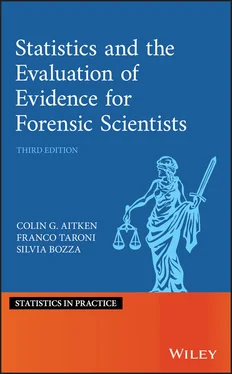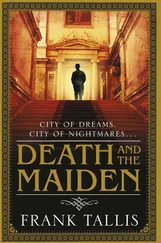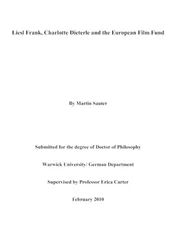1 ...7 8 9 11 12 13 ...37 The role of Bayesian inference in forensic science remains controversial. In order to try to understand why this may be so, we can do no better than to quote from an eminent fibres expert who wrote:
There may be different reasons for the obvious reluctance or scepticism connected with the adoption of Bayesian theory for presenting fibres evidence. These may include:
a lack of awareness of the explanatory literature available;
difficulty in understanding the proposals therein;
an antagonistic mind‐set generated by an approach which is thought too complicated and too mathematical;
not knowing how to apply Bayes Theorem in practical casework;
criticism that case scenarios dealt with in the literature are over‐simplified and not realistic.
(Grieve, 2001, p. 208)
We hope that this book goes some way towards overcoming the reluctance and scepticism.
Reference is made on occasion to probability values of statistical distributions. Rather than make reference to statistical packages and books of tables each time this is done, details of several packages are listed here instead:
MINITAB. See http://www.minitab.comand Ryan et al. (2000).
R: This is a language and environment for statistical computing and graphics which is available in source code form as Free Software under the terms of the Free Software Foundation's GNU General Public License. R can be considered as a different implementation of S. There are some important differences, but much code written for S runs unaltered under R. See http://www.r-project.org/and Ihaka and Gentleman (1996).
S‐PLUS: See http://www.mathsoft.com/splusand Venables and Ripley (2002). See also http://lib.stat.cmu.edu/S/for software and extensions. 1
In addition, for those who like paper a very useful book of statistical tables is Lindley and Scott (1995).
During the preparation of this book, two eminent forensic scientists, Barry Gaudette and Mike Grieve, died. Both did much to inspire our work in evidence evaluation, for which we will always be grateful.
Many people have helped in many ways in the preparation of this book. In particular, we acknowledge the assistance of Fred Anglada, Marc Augsburger, Luc Besson, Alex Biedermann, Christophe Champod, Pierre Esseiva, Paolo Garbolino, David Lucy, Willy Mazzella, Phil Rose, and Bruce Weir. Whilst we have received much advice, we accept full responsibility for any errors of commission and omission. The Leverhulme Trust provided invaluable support of this work through the award of a research fellowship to one of us (CGGA). Dennis Lindley graciously agreed to write a foreword. He has been an inspiration to us throughout our careers and we thank him most sincerely for the honour he has done us. We also thank the staff at John Wiley and Sons, Ltd., Lucy Bryan, Rob Calver, Siân Jones, Jane Shepherd, and a very assiduous copy‐editor, Richard Leigh, for their help and support in bringing this project to fruition.
Last, but by no means least, we thank our families for their support and encouragement.
C.G.G. Aitken and F. Taroni
Edinburgh and Lausanne
2004
1 1Added in 2020: these websites no longer exist. S‐Plus is owned by TIBCO ( https://www.tibco.com/).
1Uncertainty in Forensic Science
The purpose of this book is to discuss the statistical and probabilistic evaluation of scientific evidence for forensic scientists. A formal definition of evidence is given in Section 1.4. For the most part the evidence to be evaluated will be the so‐called transfer or (physical) trace evidence, but the general logic also applies to other types of evidence, such as digital, pattern, or testimonial evidence.
There is a well‐known principle in forensic science known as Locard's principle , which states that every contact leaves a trace (Locard 1920).
[  ] tantôt le malfaiteur a laissé sur les lieux les marques de son passage, tantôt, par une action inverse, il a emporté sur son corps ou sur ses vêtements, les indices de son séjour ou de son geste. (p. 139)
] tantôt le malfaiteur a laissé sur les lieux les marques de son passage, tantôt, par une action inverse, il a emporté sur son corps ou sur ses vêtements, les indices de son séjour ou de son geste. (p. 139)
This is translated as (Inman and Rudin 2001)
[  ] either the wrong‐doer has left signs at the scene of the crime, or, on the other hand, has taken away with him – on his person (body) or clothes – indications of where he has been or what he has done. (p. 93)
] either the wrong‐doer has left signs at the scene of the crime, or, on the other hand, has taken away with him – on his person (body) or clothes – indications of where he has been or what he has done. (p. 93)
The principle was reiterated using different words in Locard (1929). This has been translated by the same author in 1930. Locard (1930) wrote
For the microscopic debris that covers our clothes and bodies are the mute witnesses, sure and faithful, of all our movements and of all our encounters. (p. 276)
Transfer evidence and Locard's principle may be illustrated as follows. Suppose a person gains entry to a house by breaking a window and assaults the man of the house, during which assault blood is spilt by both victim and assailant. The criminal may leave traces of their presence at the crime scene in the form of bloodstains from the assault and fibres from his clothing. This evidence is said to be transferred from the criminal to the scene of the crime. The criminal may also take traces of the crime scene away with them. These could include bloodstains from the assault victim, fibres of their clothes, and fragments of glass from the broken window. Such evidence is said to be transferred to the criminal from the crime scene. A person of interest 1 (PoI) is soon identified, at a time at which they will not have had the opportunity to change their clothing. The forensic scientists examining the PoI's clothing find similarities amongst all the different types of evidence: blood, fibres, and glass fragments. They wish to evaluate this evidence . It is hoped that this book will enable them so to do.
However, for evaluation, it is not only similarity that is important but also the rarity of the characteristics of interest. Hence, quantitative issues relating to the distribution of these characteristics will be discussed. However, there will also be discussion of qualitative issues such as the choice of a suitable population against which variability in the measurements of the characteristics of interest may be compared. Also, a brief history of statistical aspects of the evaluation of evidence is given in Chapter 3.
1.2 Statistics and the Law
The book does not focus on the use of statistics and probabilistic thinking for legal decision making, other than by occasional reference. Also, neither the role of statistical experts as expert witnesses presenting statistical assessments of data nor their role as consultants preparing analyses for counsel is discussed. There is a distinction between these two issues (Fienberg 1989, Tribe 1971). The main focus of this book is on the assessment of evidence for forensic scientists, in particular for identification purposes. The process of addressing the issue of whether or not a particular item came from a particular source is most properly termed individualization . ‘Criminalistics is the science of individualization’ (at p. 236) as defined by Kirk (1963) but established forensic and judicial practices have led to it being termed identification . The latter terminology will be used throughout this book. An identification , however, is more correctly defined as ‘the determination of some set to which an object belongs or the determination as to whether an object belongs to a given set’ (Kingston 1965a). Further discussion is given by Kwan (1977), Evett et al. (1998), and Champod et al. (2016b). For a critical discussion of individualisation as a decision, see Cole (2014), Biedermann et al. (2008a), and Saks and Koehler (2008). More details are given in Section 2.5.9.
Читать дальше

 ] tantôt le malfaiteur a laissé sur les lieux les marques de son passage, tantôt, par une action inverse, il a emporté sur son corps ou sur ses vêtements, les indices de son séjour ou de son geste. (p. 139)
] tantôt le malfaiteur a laissé sur les lieux les marques de son passage, tantôt, par une action inverse, il a emporté sur son corps ou sur ses vêtements, les indices de son séjour ou de son geste. (p. 139) ] either the wrong‐doer has left signs at the scene of the crime, or, on the other hand, has taken away with him – on his person (body) or clothes – indications of where he has been or what he has done. (p. 93)
] either the wrong‐doer has left signs at the scene of the crime, or, on the other hand, has taken away with him – on his person (body) or clothes – indications of where he has been or what he has done. (p. 93)










